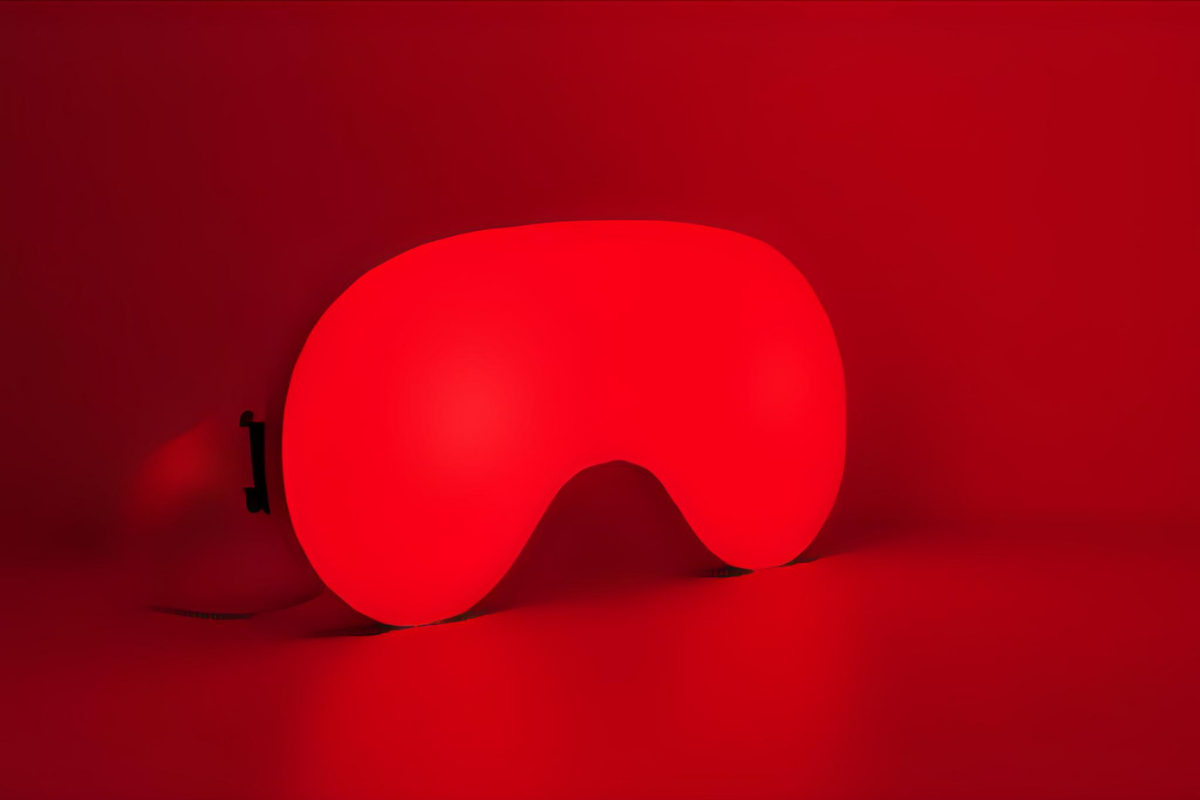Infrared vs Red Light: What’s the Difference?
Let’s clear something up right away. People often use the terms red light and infrared light like they mean the exact same thing. But here’s the truth: while they’re related, they’re not interchangeable.
Understanding the difference matters, especially if you're trying to choose the right device or build a routine that actually supports your goals. Whether you're aiming for glowing skin or faster recovery after a workout, the light you use makes all the difference.
Let’s break it down in plain language.
Red Light = Visible Light
Red light is the kind you can actually see. It's that warm, glowing hue on the lower end of the visible light spectrum. If you've ever used a red light face mask or seen someone bathed in that soft red glow, that’s exactly what we’re talking about.
Most red light therapy devices use wavelengths in the 620 to 660 nanometer range. This range focuses on the surface level of your skin, which is why it’s so popular in beauty and skincare routines.
Studies have shown that red light therapy stimulates collagen and improves skin tone, making it effective for smoothing texture and reducing fine lines over time.
Here are the benefits people typically see with red light therapy:
• Smoother skin tone and texture
Red light can help with uneven skin tone, dullness, and that tired, gray-ish cast that shows up when you're sleep-deprived or stressed.
• Collagen stimulation
Collagen is the magic word when it comes to plump, youthful skin. Red light encourages your skin to produce more of it naturally, which helps reduce fine lines over time.
• Reduction of wrinkles and scars
It won’t erase deep-set wrinkles overnight, but with regular use, red light may help fade surface-level wrinkles and acne scarring.
• Daily glow-up effect
Use it regularly, and your skin just looks more alive. Think “well-rested and hydrated” without actually being either.
Red light therapy is often the go-to for people who want to upgrade their skincare routine. It’s gentle, non-invasive, and safe for most skin types. Even better, it works well when combined with serums, moisturizers, or other topicals because it helps increase absorption.
So if your goals are mostly cosmetic, like brighter skin, better texture, or fewer fine lines, red light is probably your best friend.
Infrared = Invisible Light

Now, let’s talk about infrared.
Infrared sits in the 700 to 1200 nanometer range and works below the skin’s surface, targeting muscles and joints. It’s popular for pain relief, inflammation reduction, and deep tissue recovery.
There’s growing evidence that infrared therapy supports muscle recovery and improves circulation, which is why it’s widely used by athletes and in physical therapy.
Where red light is surface-level, infrared goes deeper, literally. It penetrates further into your skin and even into your muscles and joints.
Infrared therapy is commonly used for:
• Muscle and joint recovery
Infrared is popular among athletes and anyone dealing with sore muscles. It helps boost circulation in deep tissue, which supports faster recovery.
• Reducing inflammation
Because it reaches deeper layers, infrared can help calm chronic inflammation, especially in people with conditions like arthritis or joint pain.
• Improving circulation
The gentle heat from infrared encourages blood flow, which means more oxygen and nutrients getting where they need to go.
• Easing soreness and tension
Whether you’re dealing with tech neck, a stiff back, or post-leg day regret, infrared can help your muscles release and relax.
Infrared is the more therapeutic option. It's all about restoring function, reducing discomfort, and supporting your body from the inside out.
If you’re chasing relief, recovery, or deeper healing, not just skincare, infrared is the way to go.
So, Which One Do You Actually Need?
That depends on your goals. Let’s break it down even further.
Want brighter, healthier-looking skin?
Go with red light. It’s the clear choice for anyone focused on beauty or skincare. You’ll get that glowy, selfie-ready complexion with consistent use. Plus, it’s easy to add to your existing routine.
Want faster recovery or pain relief?
Go with infrared light. Whether it’s muscle soreness, tension headaches, or post-workout fatigue, infrared provides support where it matters most, below the surface.
Want both?
Get a dual-spectrum device that includes red and near-infrared light. A lot of high-quality panels and masks use a combo of both wavelengths to give you the best of both worlds.
Here’s a quick comparison table for reference:
|
Goal
|
Use Red Light?
|
Use Infrared?
|
|
Improve skin tone and texture
|
✅
|
❌
|
|
Boost collagen
|
✅
|
❌
|
|
Ease joint or muscle soreness
|
❌
|
✅
|
|
Help with sleep and relaxation
|
✅ (mildly)
|
✅ (more deeply)
|
|
Reduce inflammation
|
⚠️ (slightly)
|
✅ (very effective)
|
|
Support post-workout recovery
|
⚠️
|
✅
|
|
Want it all?
|
✅ Combo Device
|
✅ Combo Device
|
How They Work Together
Here’s the good news: you don’t have to pick a side. You can use both.Most modern devices combine both wavelengths for layered benefits. The red light addresses skin clarity and collagen, while infrared promotes healing and nervous system balance.
You can even pair sessions with mindfulness techniques. Research shows that infrared light enhances relaxation when used with breathwork, helping regulate stress and improve sleep quality.
For example:
- The red light helps smooth your skin and gives you that glow
- The infrared light works underneath, supporting blood flow and recovery
Using both wavelengths means you’re not just treating your skin. You’re also giving your body a chance to rest, reset, and heal.
How to Use Them in Your Routine
Let’s say you’ve got a dual-light device. How do you build it into your day?
Here are a few simple routines depending on your focus:
Skincare Routine (Red Light Focus)
• Cleanse your face
• Apply a hydrating serum
• Sit in front of your panel or wear your mask for 5 to 10 minutes
• Follow with moisturizer and SPF if it’s morning
Recovery Routine (Infrared Focus)
• After a workout or long day, sit or lie down with your infrared panel aimed at sore areas (like your neck, back, or legs)
• Use for 10 to 20 minutes
• Follow with stretching or light massage if needed
Sleep Support (Both)
• Use your light for 5 to 10 minutes in the evening
• Focus on areas of tension or use it on your face to relax
• Pair with deep breathing or a guided meditation
What to Look For in a Device

If you’re shopping for a light therapy device and not sure what to choose, keep these things in mind:
• Wavelengths listed
Look for panels that specify the nanometers used. Red light should be in the 620–660 nm range. Infrared should be in the 700–1200 nm range.
• Combo wavelengths
Many high-quality devices offer both types in one unit. This is ideal if you want full-body or layered benefits.
• Size and usage
If you only want to treat your face, a mask or smaller panel is fine. For full-body support or recovery, go for a larger panel or a setup that targets major muscle groups.
• Timer settings and safety
Built-in timers and automatic shutoff features are great for staying consistent without overdoing it.
Final Takeaway
Red light and infrared are different tools with different strengths. One focuses on the surface. The other goes deeper. And both have something amazing to offer.
If you’re new to light therapy and just want better skin, red light alone is a great starting point. If you’re looking for recovery, relaxation, or relief, infrared is your go-to.
But honestly? The sweet spot is using them together. You’ll glow on the outside, feel better on the inside, and build a habit that supports your body and mind, one session at a time.

